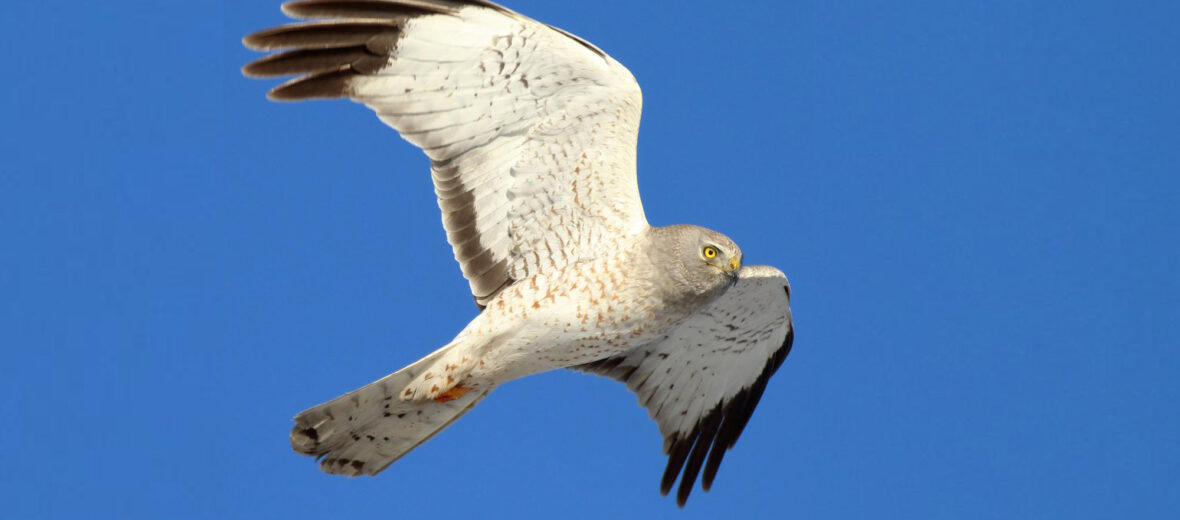
The northern harrier, aka hen harrier or swamp hawk, is a bird of prey that belongs to the hawk family. They can be found in North America, Europe, and Asia. They prefer pastures, woodlands, grasslands, marshes, coastal areas, river valleys, and semi-desert regions. With an estimated global population of 512,000 wild individuals, these hawks are listed as Least Concern by the IUCN. Although, they do face the threats of habitat destruction, hunting, trapping, accidental poisoning, and invasive species & their subsequent diseases.
First the Stats…
Scientific name: Circus cyaneus
Weight: Up to 14 ounces
Length: Up to 20 inches
Wingspan: Up to 42 inches
Lifespan: Up to 16+ years
Now on to the Facts!
1.) These hawks prey on mice, rats, voles, ground squirrels, birds, reptiles, amphibians, insects, and will even eat carrion (dead animals).
2.) Coyotes, skunks, raccoons, red foxes, crows, ravens, and owls all prey on harriers.
3.) Northern harriers communicate via whistles, screams, and clucking calls.
4.) In a true feat of aerial acrobatics that can last up to 20 minutes, male harriers will perform a variety of twists and turns in the air to woo a female.
5.) Males breed with up to 5 females each breeding season! They will also tend to these moms to be by bringing the females and their chicks food.
But wait, there’s more on the northern harrier!
6.) If you were wondering how the above land-base predators could procure a hawk meal, Northern harrier nests are made of sticks, thick plants, and grass and are usually hidden among dense vegetation on the ground. Since they are built on the ground, they are easier for land-based predators to get at them.
7.) Females lay up to 6 eggs that hatch in up to 31 days.
Did you know…?
These hawks can fly up to 40 mph.
8.) Males and females feed mid-air, in that the male will drop morsels of food – while in flight – and the female will catch the food while also flying.
9.) When able to fly, the chicks also adopt this aerial feeding behavior.
10.) Northern harriers migrate, in the winter, to southern locales to escape the cold.
But wait, there’s still more on the northern harrier!
11.) These harriers participate in kleptoparasitism. This is when one animal harasses another till it relinquishes its food.
12.) Some Native American tribes believe that the site of a hawk on your wedding day is a sign of a long, happy marriage.
13.) The extensive use of pesticides in the 1970s and 1980s caused a large decline in harrier populations. But their ban has since resulted in a population growth.
14.) Harriers are often called “good hawks” because they not only control rodent populations, but they don’t pose a threat to poultry stocks, like some other hawks do.
Now a Short Northern Harrier Video!
Be sure to share & comment below! Also, check out the Critter Science YouTube channel. Videos added frequently!
Want to suggest a critter for me to write about? Let me know here.



